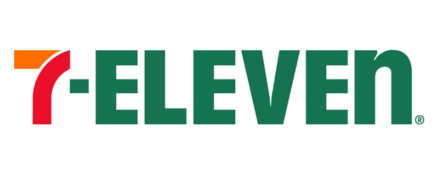What is Payment Reconciliation? A Comprehensive Guide for 2026

Payment reconciliation is one of those ciritcal accounting practices that ensures the accuracy of a company's financial records. In this comprehensive guide, we will explore what payment reconciliation is, its importance, and best practices for 2025.
This guide will help you understand how to optimize your payment reconciliation workflow, detect discrepancies early, and maintain financial integrity.
Coming Up
What is Payment Reconciliation?
Why is Payment Reconciliation Important?
What is the Payment Reconciliation Process?
What are the Types of Payment Reconciliation?
Key Benefits of Payment Reconciliation
Best Practices for Payment Reconciliation
Automating Payment Reconciliation
Common Pitfalls and How to Avoid Them
What is Payment Reconciliation?
Payment reconciliation is the process of comparing internal financial records with external bank statements to ensure all transactions are accurately recorded. This process is vital for maintaining accurate financial records and identifying discrepancies early.
The primary goal of the payment reconciliation process is to identify and resolve any discrepancies. These discrepancies can arise due to various reasons, such as:
- Data entry errors
- Missing transactions
- Incorrect amounts
- Fraudulent activities
- System errors
By regularly comparing financial records, businesses can detect these issues early on and take corrective action to maintain their accounts receivable, accounts payable, and general ledger integrity.
Why is Payment ReconciliationImportant?
Regular payment reconciliation is crucial for businesses as it ensures the accuracy of financial statements, helps maintain compliance with regulations, and supports informed decision-making. By identifying discrepancies early, businesses can take corrective actions promptly.
Payment reconciliation safeguards against errors, discrepancies, and unauthorized transactions, ranging from minor data entry mistakes to more serious issues like missing transactions or incorrect invoice amounts.
By detecting these issues early on, businesses can take corrective action and maintain the integrity of their financial records. Moreover, regular payment reconciliation is a key component of effective cash flow management, accurate financial reporting, and compliance with laws and regulations.
What is the Payment Reconciliation Process?
Step 1: Gathering Relevant Financial Records
The first step in the payment reconciliation process is to gather all relevant internal records (invoices, receipts, payment records, accounting ledgers) and external bank statements or other financial documents. Collecting comprehensive and up-to-date records is crucial to ensuring an accurate reconciliation.
Step 2: Comparing Transactions
Once all records are gathered, the next step is to match the transactions recorded in the internal accounting system with the corresponding transactions listed on the external bank statements or other financial documents. This involves cross-checking transaction dates, payment amounts, and payee/payer information.
Try for yourself: Match transactions below:
GL Transactions
| Select | Transaction ID | Amount |
|---|
Total Selected: $0.00
Bank Transactions
| Select | Transaction ID | Amount |
|---|
Total Selected: $0.00
Congratulations! All transactions have been successfully matched.
Step 3: Identifying Discrepancies
During the payment reconciliation, any discrepancies or mismatches between the internal records and external statements are identified and documented. Common discrepancies may include missing transactions, incorrect amounts, duplicate entries, or timing differences.
Step 4: Resolving Discrepancies
The next step for each identified discrepancy is investigating and resolving the issue. This may involve reviewing original documentation, contacting vendors, customers, or financial institutions for clarification, correcting data entry errors, or adjusting the accounting records.
Step 5: Documenting the Process
After resolving all discrepancies, it is essential to document the reconciliation process and any adjustments made. This documentation is a reference for future reconciliations and provides an audit trail. A supervisor or financial controller should review and approve the final reconciliation report.
By following these steps consistently and thoroughly, businesses can maintain accurate financial statements, detect and prevent fraud, and ensure the organization's overall financial health.
What are the Types of Payment Reconciliation?
Businesses engage in various types of reconciliation depending on their financial transactions and the accounts involved:
Bank Reconciliation
This involves comparing a company's internal cash (e.g., general ledger cash account) with bank records shown on the bank statement from financial institutions.
Credit Card Reconciliation
Credit card reconciliation involves verifying that all credit card transactions recorded internally by the company match the transactions listed on the bank or credit card company's statements. This process is crucial for identifying unauthorized charges and ensuring accurate recording of payment services.
Accounts Receivable Reconciliation
This process matches the accounts receivable records showing amounts owed by customers against the actual payments received from those customers. It helps identify discrepancies, such as overpayments or underpayments, and ensures accurate recording of incoming funds.
Accounts Payable Reconciliation
Accounts payable reconciliation compares the company's accounts payable records for amounts owed to vendors/suppliers against the invoices received from those vendors. This process is essential for identifying discrepancies, such as duplicate or missed payments, and maintaining accurate records of outgoing funds.
Other Types of Reconciliation
- Payroll Reconciliation: Verifies that the payroll amounts recorded internally match employee payments and withholdings.
- General Ledger Reconciliation: Ties together the subsidiary ledgers to the general ledger, ensuring accuracy and consistency across the organization.
- Digital Wallet Reconciliation: Reconciles transactions from digital wallets like Apple Pay and Google Pay against accounting records.
- Recurring Payments Reconciliation: Ensures that recurring charges are properly processed and recorded based on billing schedules and terms.
Key Benefits of Payment Reconciliation
Accurate Financial Reporting
Accurate financial reporting is essential for accounting teams, and payment reconciliation is critical. By comparing internal financial records with external statements, businesses can validate account balances, detect errors, and maintain transparency and integrity. Regular reconciliation provides a clear and transparent view of the company's financial status, which is vital for internal decision-making and stakeholder communication.
Enhanced Cash Flow Management
Effective cash flow management is crucial for a business's sustainability and growth. Payment reconciliation contributes significantly by providing real-time financial insights, improving cash flow forecasting, and optimizing operational efficiency. Automated reconciliation systems offer real-time data, giving businesses an up-to-date overview of their financial status, which is crucial for making informed decisions and managing cash flow effectively.
Detection of Errors and Fraud
One of the most critical benefits of payment reconciliation is its ability to detect and prevent errors and fraud. This is achieved through identifying discrepancies, early detection, and enhanced security. Regular payment reconciliation helps uncover discrepancies such as unauthorized transactions, duplicate payments, and other irregularities that may indicate fraudulent activity. By routinely checking financial records against bank statements, businesses can detect and address issues promptly, preventing potential fraud and mitigating losses.
Compliance with Legal and Regulatory Requirements
Compliance with legal and regulatory requirements is non-negotiable for businesses, and payment reconciliation helps ensure this by maintaining accurate records, facilitating audits, and reducing legal risks. Regular reconciliation ensures that financial records are accurate and up to date, which is crucial for complying with tax laws, accounting standards, and other regulatory requirements.
Best Practices for Payment Reconciliation
To ensure accurate financial statements, prevent fraud, and optimize the payment reconciliation process, businesses should adhere to several best practices:
Conduct Regular Reconciliation
Perform payment reconciliation regularly, ideally daily or at least monthly, to maintain accurate financial records and identify discrepancies promptly. Regular reconciliation allows for the early detection and resolution of issues.
Use Reconciliation Software
Automate payment reconciliation with specialized software to increase accuracy, save time, improve efficiency, gain real-time visibility into cash positions, handle large transaction volumes, and ensure scalability. Reconciliation software leverages advanced algorithms and rule-based matching to ensure accurate and consistent reconciliation.
Segregate Duties
To reduce the risk of errors and fraud, segment duties related to payment processes. This involves separating responsibilities such as initiating/authorizing transactions, recording transactions, custody of assets, reconciling accounts, and approving payments. Ensure you have a documented review and approval process. Segregation of duties helps maintain checks and balances and prevents individuals from having excessive control over the process.
Maintain Thorough Documentation
Maintain detailed documentation throughout the reconciliation process to provide an audit trail, support compliance with accounting standards and regulations, enable cross-checking by other team members, facilitate new employee training, and identify process improvements. Thorough documentation ensures transparency and accountability.
Automating Payment Reconciliation
Automating payment reconciliation offers numerous benefits to businesses, including:
Benefits of Automation
- Time-saving: Automated payment reconciliation solutions can significantly reduce the time required for this labor-intensive process by automatically matching transactions, identifying discrepancies, and generating reconciliation reports.
- Increased accuracy: Automated reconciliation tools leverage advanced algorithms and rule-based matching to ensure accurate and consistent reconciliation, reducing the risk of errors and discrepancies.
- Enhanced fraud detection: Automated systems can integrate with fraud detection mechanisms, utilizing machine learning algorithms to identify patterns and anomalies that may indicate fraudulent activities.
Popular Reconciliation Software
Several software solutions are available to automate payment reconciliation processes, such as:
- Solvexia: A powerful finance automation platform with robust reconciliation capabilities.
- BlackLine: A cloud-based financial automation solution with a dedicated module for account reconciliation.
- Xero: A popular accounting software with automatic bank transaction importing and matching.
- Nanonets: An AI-powered solution that leverages OCR and machine learning for automated reconciliation.
- ReconArt: A web-based tool offering automated matching, exception handling, and multi-sided reconciliation capabilities.
Automating payment reconciliation involves several key steps, including setup and configuration, data gathering and extraction, intelligent transaction matching, exception management, reconciliation and adjustment, reporting and audit trail, and continuous monitoring and improvement.
Common Pitfalls and How to Avoid Them
While implementing payment reconciliation processes, businesses may encounter common pitfalls hindering effectiveness and efficiency.
Inconsistent Reconciliation Schedules
Inconsistent or infrequent reconciliation can accumulate errors and discrepancies, making it more challenging to identify and resolve issues. Businesses should establish and adhere to a regular reconciliation schedule, whether daily, weekly, or monthly, depending on the volume and complexity of transactions.
Lack of Documentation
Failing to maintain thorough documentation of the reconciliation process can lead to confusion, lack of transparency, and difficulty in auditing. Companies must ensure that all steps of the reconciliation process are well-documented, including any adjustments made, discrepancies identified, and resolutions implemented. This documentation serves as a valuable reference for future reconciliations and audits.
Overlooking Small Discrepancies
While ignoring small discrepancies to save time may be tempting, this practice can lead to more significant issues. Small discrepancies can accumulate over time and may indicate underlying problems in the reconciliation process. Organizations should investigate and resolve all discrepancies, regardless of their size, to maintain the accuracy and integrity of financial records.
Example of Payment Reconciliation
To illustrate the impact of automated payment reconciliation, let's examine two case studies:

7-Eleven Philippines
7-Eleven Philippines, the largest convenience store company in the country, implemented Solvexia to automate its e-wallet bank reconciliation process. With Solvexia, 7-Eleven automated a three-way reconciliation for all 3,400+ store locations across two payment gateways, the Point of Sale (POS) system, and the bank statement.
The bank reconciliation process took days and is now completed in minutes, enabling the team to divert more time to analysis and reduce fraud and missing cash at the store level.
Wrap Up
Payment reconciliation is a vital process ensuring the accuracy and integrity of financial transactions. Businesses can identify and resolve discrepancies, prevent fraud, and maintain accurate financial data by comparing internal records with external statements. Regular payment reconciliation is crucial for accurate financial reporting, compliance with laws and regulations, and optimizing operational efficiency.
To streamline the payment reconciliation process, businesses should follow best practices such as performing regular reconciliations, segregating duties, using reconciliation software, maintaining thorough documentation, and promptly investigating discrepancies. Automating payment reconciliation offers numerous benefits, including time savings, increased accuracy, and enhanced fraud detection capabilities.
By implementing an effective payment reconciliation system and leveraging automation tools, businesses can ensure their organization's financial health and stability, make informed decisions, and build trust with stakeholders.
FAQ
Intelligent reconciliation solution
Intelligent rebate management solution
Intelligent financial automation solution
Intelligent Financial Automation Solution
Intelligent financial automation solution
Intelligent financial automation solution
Intelligent financial automation solution
Intelligent financial automation solution
Intelligent regulatory reporting solution
Free up time and reduce errors
Recommended for you

Request a Demo
Book a 30-minute call to see how our intelligent software can give you more insights and control over your data and reporting.

Reconciliation Data Sheet
Download our data sheet to learn how to automate your reconciliations for increased accuracy, speed and control.

Regulatory Reporting Data Sheet
Download our data sheet to learn how you can prepare, validate and submit regulatory returns 10x faster with automation.

Financial Automation Data Sheet
Download our data sheet to learn how you can run your processes up to 100x faster and with 98% fewer errors.

Financial Automation Data Sheet
Download our data sheet to learn how you can run your processes up to 100x faster and with 98% fewer errors.

Financial Automation Data Sheet
Download our data sheet to learn how you can run your processes up to 100x faster and with 98% fewer errors.

Financial Automation Data Sheet
Download our data sheet to learn how you can run your processes up to 100x faster and with 98% fewer errors.

Financial Automation Data Sheet
Download our data sheet to learn how you can run your processes up to 100x faster and with 98% fewer errors.

Financial Automation Data Sheet
Download our data sheet to learn how you can run your processes up to 100x faster and with 98% fewer errors.

Rebate Management Data Sheet
Download our data sheet to learn how you can manage complex vendor and customer rebates and commission reporting at scale.

Top 10 Automation Challenges for CFOs
Learn how you can avoid and overcome the biggest challenges facing CFOs who want to automate.
.svg)



%25201.webp)